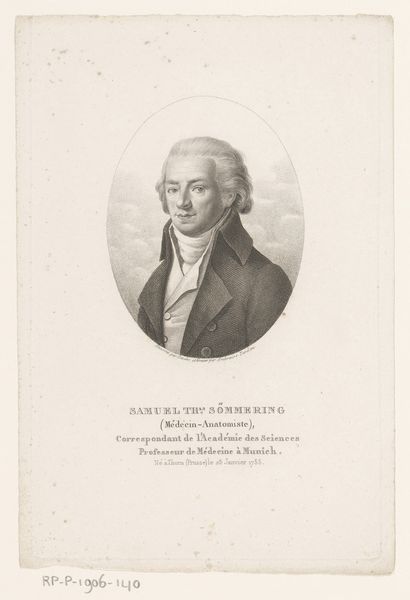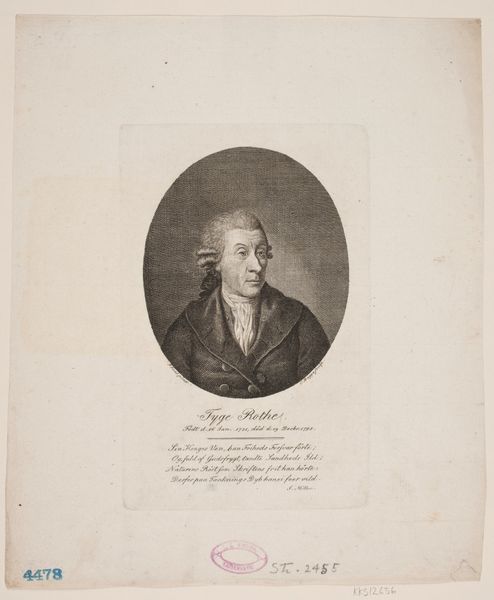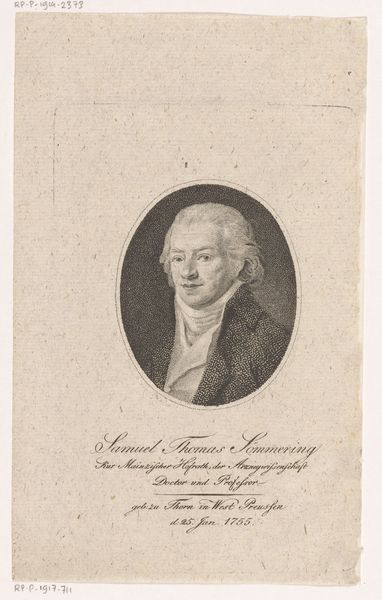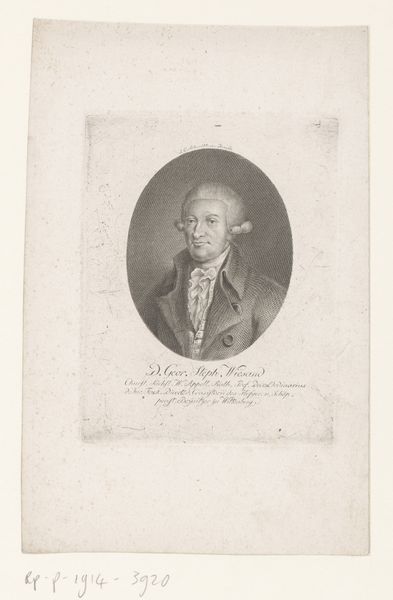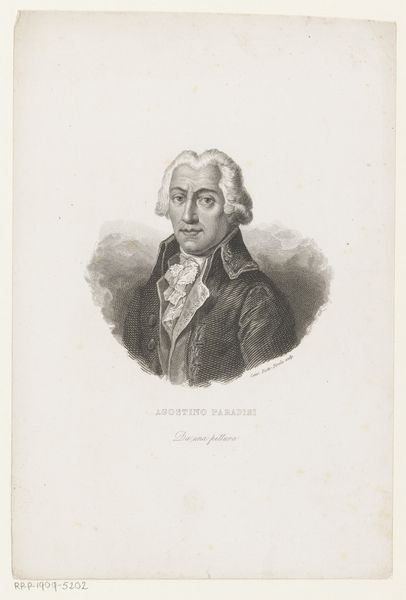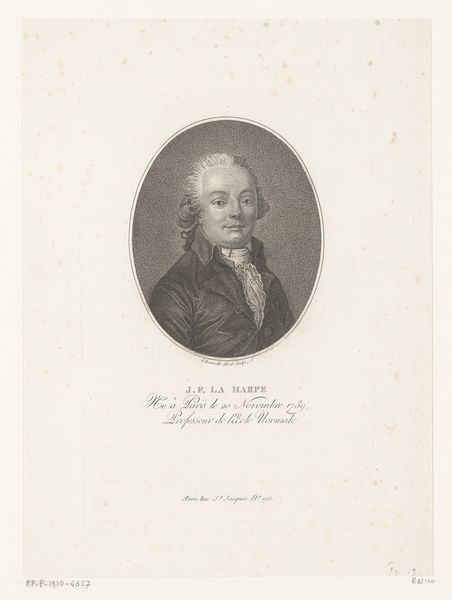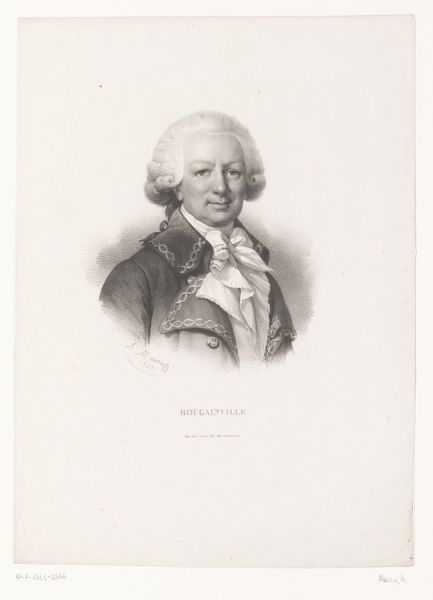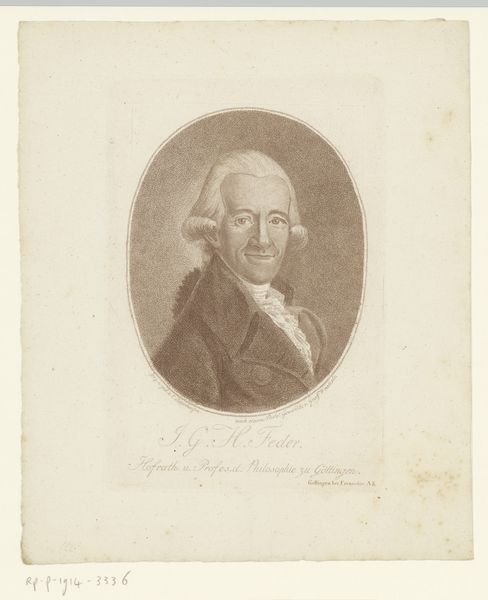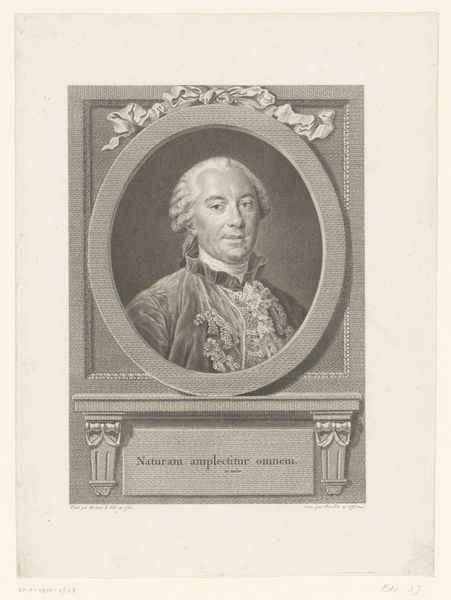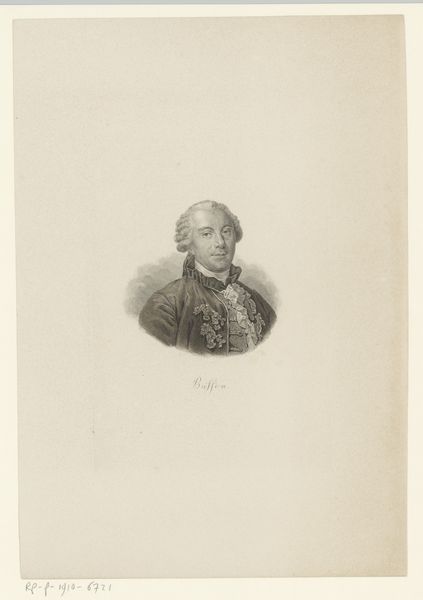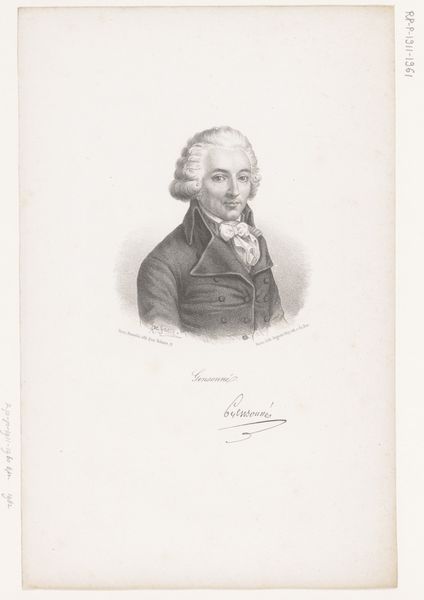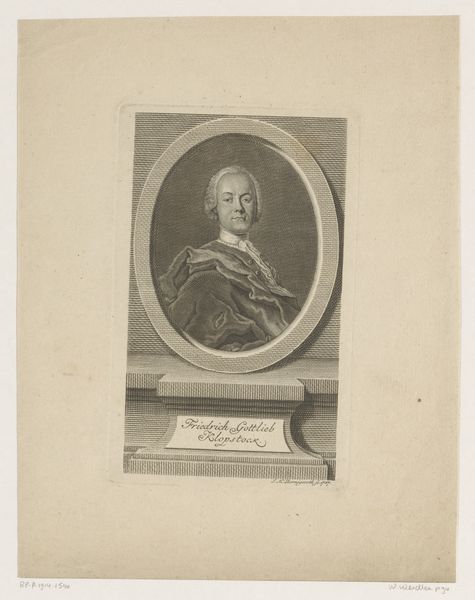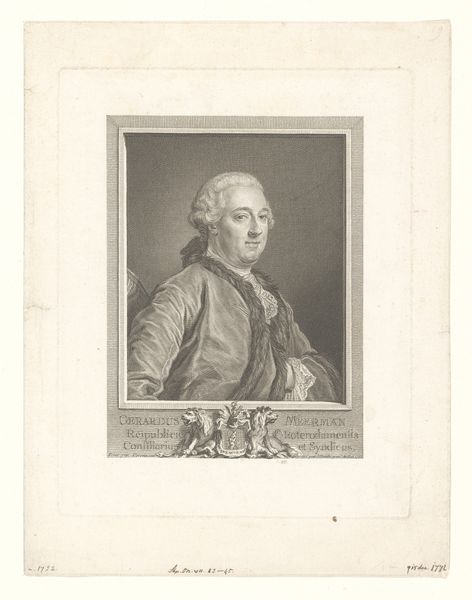
print, engraving
#
portrait
#
neoclacissism
# print
#
old engraving style
#
history-painting
#
engraving
Dimensions: height 219 mm, width 136 mm
Copyright: Rijks Museum: Open Domain
Editor: Here we have François Guibert’s engraving, "Portret van Arnaud Gensonné," created around 1793. It’s a striking neoclassical portrait, capturing a moment of history, I suppose. What first grabs your attention in this work? Curator: The oval frame containing Gensonné acts almost as a seal or a coin. Do you see how it separates the subject from our time and sets him in a timeless sphere? He's not just a man but an icon of a political idea, or perhaps, the memory of one. Consider the sharp, clean lines characteristic of neoclassicism and how they serve to create that very iconographic distance. Editor: That's interesting. So the artist isn't just portraying a person, but an idea? What would that idea be, though? Curator: Indeed! Look at the way Gensonné is presented: poised, confident, even severe. This is deliberate. It is about invoking the ideals of the Revolution and, at the same time, suggesting a certain Roman stoicism or resolve. Doesn't the attire itself, despite its period flamboyance, subtly allude to those senatorial portraits of old? This engraving acts as a cultural artifact, reflecting how the Revolution wanted to be seen. It’s more than just an image, it’s history and aspiration rendered in lines. Editor: I never thought about how much intention could be embedded in something that looks simple at first glance. The choice of style becomes a whole other layer of meaning. Thanks! Curator: Precisely! It serves as a potent reminder that every image, no matter how small or seemingly straightforward, carries with it the echoes of cultural memory and intent.
Comments
No comments
Be the first to comment and join the conversation on the ultimate creative platform.
